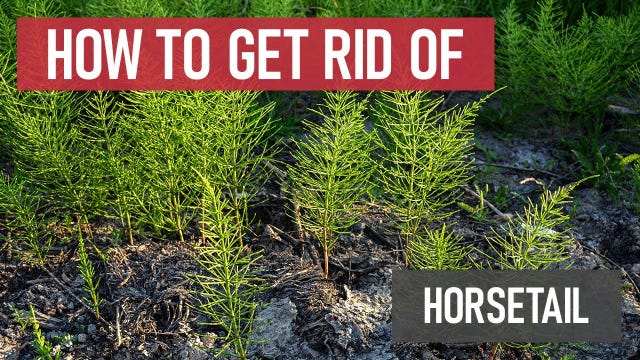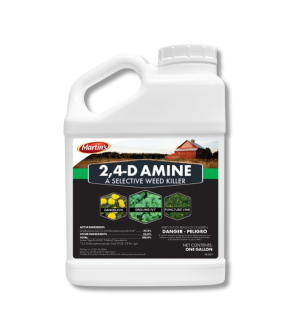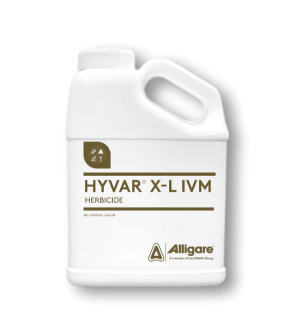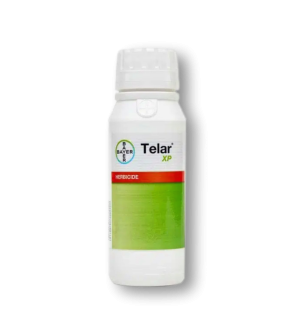Gain access to personalized product screening, the best pricing, rewards, and more!
Most Effective Products
Horsetail (Marestail) Control: How to Get Rid of Horsetail (Marestail)
This page is a general horsetail (marestail) control guide. Using the products and methods suggested, you will get control of horsetail (marestail). Follow this guide, use the recommended products, and we guarantee 100% horsetail control.
Horsetail, also known as scouring rush, marestail, or field horsetail, is a perennial weed that grows throughout the northern half of the United States. They are a real threat to a home yard since they can easily spread and produce many spores that quickly germinate in the soil. However, the real issue is this weed's rhizomatous root system.
The smallest part of the horsetail roots can regrow, helping them to overtake and take away essential nutrients, making your lush, green yard appear barren or discolored. These weeds' root systems can reach up to 7 feet (2 meters) down into the soil, making them hard to remove. Traditional methods of hand-pulling weeds or plowing will not work because they might cause the rhizomes to break and spread the infestation further.
Horsetail is a living fossil and the only living member of the genus Equisetum, which can be found dating as far back as 350 million years ago. This ancient plant has waxy leaves, helping it resist most herbicides by preventing penetration.
If you want to kill horsetail in your backyard, you must approach the infestation with patience and diligence as you follow the recommended steps and products in this DIY guide.
Identification
Before you can proceed with the treatment of horsetail, you will need to ensure the weed infesting your yard is indeed horsetail. Misidentification can lead you to use the wrong products, which leads to a waste of time and money. Refer to the following characteristics associated with horsetail to identify the weed properly:

- Horsetails are herbaceous plants related to ferns. They reproduce by spores rather than seeds. In spring, horsetails first emerge as fertile stems.
- They are pale or brown, grow up to 10 inches in height, and possess spore cones that are 1.5 to 2 inches long. Once these stems have produced spores, they wither away.
- Afterward, the sterile stems emerge. Stems typically start brown and progress to green later in the growing season. They are visibly jointed and hollow on the inside. These stems can grow up to 4 feet in height. A common species, field horsetail, will grow branches or modified leaves in a whorl arrangement along the stem. Other species of horsetail may lack these branches.
Use the above image and description to help you properly identify horsetail. If unsure, contact us by phone or email or bring a photo of the plant infesting your property to one of our store locations. One of our team representatives can examine the weed and recommend the appropriate product to control that plant.
Inspection
You can proceed with the inspection once you confirm that you are dealing with horsetail. During this phase, you look for horsetail in your yard and the conditions allowing the weed to survive. By knowing this, you will avoid unnecessary product applications and eliminate the conditions allowing the horsetail to thrive.

Where to Inspect
Horsetail is found in moist areas along streams, ditches, drainage ditches, rivers, swamps, and roadsides, as well as in fields, crop fields, lawns, meadows, woods, landscapes, ornamental gardens, between slabs in gravel paths, and other areas where the soil has been disturbed.
This weed prefers moist sites but can live in dry areas once established.
What to Look For
In the spring season, light brown stems begin to appear. These stems will have a cone-shaped structure (the spore) at the tip, making them resemble small fir trees.
They will eventually become green and then develop into a feathery-like plant in the summer season. When pulled, both shoots break easily from the joint and have a hard or rough touch.
Treatment
Before mixing or applying herbicide material, wear the proper personal protective equipment (PPE).
Systemic herbicides containing one of these active ingredients, 2,4-D amine, halosulfuron-methyl, or triclopyr, will be most effective against horsetail. Prevention and early intervention in the early spring season before March and April are the most effective forms of horsetail control.
We recommend using Sedgemaster Herbicide, which has the active ingredient halosulfuron-methyl 75%. This water dispensable granule will eliminate horsetail in cool and warm-seasoned lawns, landscape areas, and other terrains within 2 weeks of application.
Though efficient, this product can be mixed with a surfactant to improve performance.
Step 1: Mix and Prepare

Determine how much Sedgemaster Herbicide to use by measuring the square footage of the treatment area. Measure the length and width of the treatment area in feet, then multiply them together (length X width = square footage). To find acreage, divide the square footage by one acre (square footage / 43,560 sq. ft. = acre).
To treat horsetail, use the rate of 0.06 oz. (1.8 grams) of Sedgemaster Herbicide in 1 to 2 gallons of water per 1,000 sq. ft. after this weed has leafed out.
Add 2 teaspoons (1/3 fluid ounce) of nonionic surfactant per gallon of water.
This product needs to be mixed with water, so we recommend using a handheld pump sprayer or backpack sprayer.
Fill the sprayer with half the water, add a measured amount of Sedgemaster Herbicide, and then add the remaining half of the water. Lastly, add the appropriate amount of surfactant to the spray tank. Give enough time for the surfactant to disperse fully.
Once everything has been added, close the spray tank lid and agitate for 2 minutes to ensure the solution is evenly mixed.
Step 2: Apply Sedgemaster Herbicide

Adjust your sprayer to low or medium pressure for either a spot or broadcast application. Spray the horsetail until wet but not to the point of runoff.
Within 14 days after application, you will see the effects of Sedgemaster Herbicide as a necrotic ring at the base of the weed, even though the leaves and stems remain green and a deep leathery green in color.
Since this product forms a suspension in water, it is important to maintain good agitation during mixing and spraying. If the spray suspension is allowed to settle for a short period of time, be sure to agitate it for a minimum of 10 minutes. To be effective, apply the spray solution within 24 hours of mixing.
Keep people and pets off-treated areas until the spray solution has dried.
This plant’s deep root system requires follow-up applications to drive the chemical down to treat the entire root.
Make your follow-up application 7 to 14 days after the initial treatment. Do not apply more than 5 and one-third ounces of the product per acre per season.
Applications are most effective when the plant is young, actively growing, and has shallow roots.
Prevention
When horsetail has been removed from your property, you must ensure this weed does not return. Listed below are some preventative measures to keep horsetail away from your home property:
- Aeration or fixing the terrain itself can improve parts of your yard that do not drain well. Aerating the soil helps reduce compaction and improves the movement of water and nutrients since horsetail thrives in low-oxygen and moist areas.
- Apply the appropriate seasonal fertilizer to promote turf growth and help choke out horsetail growth.
- Till or hoe around the horsetail to prevent spreading the spores to other parts of your yard.
- Improve irrigation methods to avoid moist sites by adjusting watering to once weekly with no more than an inch of irrigation. Water early in the morning to allow enough time for the turf to dry.
Key Takeaways
What are Horsetails?
- Horsetails are perennial weeds consisting of two types of stems, also called shoots. They begin to produce spores in March to April and continue growing to summer until they form a dense carpet of weeds, leading to the death of desired plants.
How to Get Rid of Horsetail
- To get rid of horsetails, we recommend applying Sedgemaster Herbicide on top and bottom of weed leaves until wet, but not to the point of runoff.
Preventing Horsetail Reinfestation
- Correct moisture issues in your yard, aerate the soil to help loosen it, and apply fertilizers in the correct season to prevent horsetail from remerging.
-
Q:Hello, your pictures show spraying the herbicide for killing horsehair weed on a lawn. Doesn't the herbicide kill the grass? I have horsehair in and around plants which I don't want to loose. Can I use this herbicide and not damaged/killing my plants whilst trying to kill the horsehair weed? Regards Shelly5/27/25












